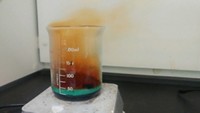Advertisement
Grab your lab coat. Let's get started
Welcome!
Welcome!
Create an account below to get 6 C&EN articles per month, receive newsletters and more - all free.
It seems this is your first time logging in online. Please enter the following information to continue.
As an ACS member you automatically get access to this site. All we need is few more details to create your reading experience.
Not you? Sign in with a different account.
Not you? Sign in with a different account.
ERROR 1
ERROR 1
ERROR 2
ERROR 2
ERROR 2
ERROR 2
ERROR 2
Password and Confirm password must match.
If you have an ACS member number, please enter it here so we can link this account to your membership. (optional)
ERROR 2
ACS values your privacy. By submitting your information, you are gaining access to C&EN and subscribing to our weekly newsletter. We use the information you provide to make your reading experience better, and we will never sell your data to third party members.
A recent Science Concentrate featured a new mechanism for aerosol formation (C&EN, May 30, page 7). There is another photochemical process for developing haze events.
In 1990, in Hilton Head, S.C., I presented a paper concerning carboxylic acids in acid rain at an international conference for the National Acid Precipitation Assessment Program. After listening to others, I was curious about carboxylic acids in haze. Thanks to high-performance liquid chromatography, it was determined that the main, indeed often the only, carboxylic acid present in haze is oxalic acid. Because of the belief that this acid could result from the photochemistry of hydrocarbons, water vapor, and air, a reactor was constructed. After several hours, more than 40 compounds formed, indicating a pathway that did not generate carboxylic acid. A paper concerning this research was presented at the ACS national meeting in Denver in 1993.
A friend, David Badger, jokingly suggested that oxalic acid can be formed from carbon dioxide and water. A reactor was constructed. CO2 and water were placed inside, and the ultraviolet lamp was turned on. I went to class, returned, and observed that a haze had formed. CO2 and water vapor in the presence of light from a low-pressure mercury vapor lamp had reacted to form oxalic acid. The reaction did not occur when a medium-pressure lamp was used.
Oxalic acid is a major component of photochemical haze and only requires CO2 and water vapor in the presence of sunlight to form.
W. G. Sayre
Castine, Maine
C&EN will not publish an issue on Aug. 15, 2016. Watch for C&EN’s special double issue on Aug. 22 announcing this year’s Talented 12, a list of 12 young chemical scientists whose next moves you won’t want to miss.





Join the conversation
Contact the reporter
Submit a Letter to the Editor for publication
Engage with us on Twitter